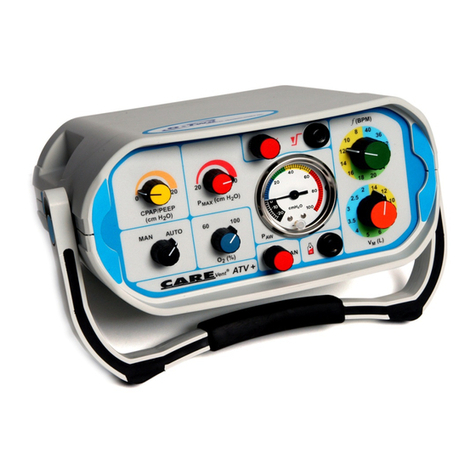
6e700 User Manual
• Do not use this ventilator within a Magnetic Resonance Imaging
(MRI, NMR, NMI) suite.
• Do not use this ventilator in hyperbaric (high pressure) chambers.
• Do not use the external electrical power supply outdoors as
moisture may aect its function.
• Do NOT allow the power supply plug to contact the patient.
• The performance of this ventilator may be aected if used
near portable and mobile RF telecommunication devices (cell
phones) within the minimum distance specified in section 9.5
of this user manual.
• The intake and exhaust ports on the patient valve must be left
unobstructed for proper function & safety.
• When using a bacterial filter or HME (Heat Moisture Exchanger)
connect the bacterial filter or HME to the patient connection
between the elbow and the endotracheal tube or face mask,
note that this action will increase the dead space. Bacterial
filters or HME may increase breathing resistances.
• Use pressure regulators maintaining a minimum output flow of
120 L/min at a dynamic pressure of minimum 45 PSI to ensure
the proper functioning of the ventilator.
• Operation of this ventilator outside the environmental condition
range specified in this manual may result in a reduction and or
failure in the ventilator’s performance. In extreme temperature
conditions the eect is not noticeable in terms of delivered
ventilations but may cause excessive wear in the ventilator or its
components over time. Extreme low temperatures reduce the
operating time of the battery (Refer to 9.4 battery operating
Time).
• Operation of this ventilator outside the supply pressures range
detailed in this manual may result in reduction in the ventilator’s
performance, component failure, low pressure alarm or possible
loss of automatic cycling.
• Operation of this ventilator outside the electrical power range
detailed in this manual may result in reduction or failure in the
ventilator’s performance. Component failure, inadequate power
of internal components may occur.




























